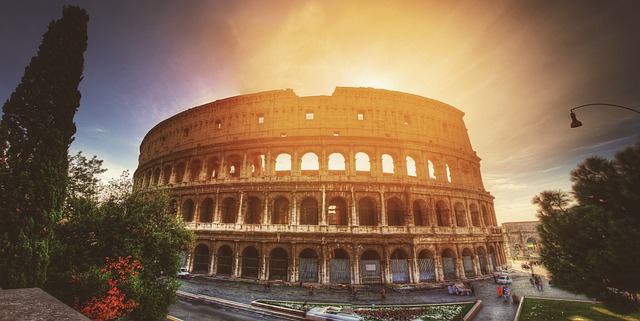

My name is Debbie, and I am passionate about developing a love for the written word and planting a seed that will grow into a powerful voice that can inspire many.


Lights, camera, punctuation! Whether you’re a cinephile or an aspiring screenwriter, navigating the correct way to format movie titles in writing can sometimes feel like deciphering a cryptic code. Should you italicize, use quotation marks, or opt for an underlined approach? Fear not, fellow film enthusiasts, as we embark on a comprehensive guide that will demystify the rules and unleash your inner grammar guru. From cult classics to box office blockbusters, we’ll delve into the intricacies of formatting movie titles, ensuring your next cinematic masterpiece receives the recognition it deserves. So grab your popcorn and let’s roll!
When it comes to writing about movies, it’s essential to know the proper formatting for movie titles. Correctly formatting movie titles not only ensures consistency and professionalism in your writing, but also shows respect for the creative works you’re discussing. In this comprehensive guide, we’ll walk you through the essential rules and conventions for formatting movie titles.
1. Capitalization and punctuation:
– In general, capitalize the principal words of the movie title.
– Use italics to format movie titles, unless you’re writing by hand or on a platform without italics capability.
– Don’t place a period at the end of a movie title, even when the title itself is a complete sentence.
2. Styling specific movie types:
– For feature films, documentaries, and TV series, capitalize the first and last word of the title, as well as any other principal words.
– Denote a series or franchise by including the series name or number in italics after the movie title, separated by a comma.
– When discussing a specific episode of a TV series, put the episode title in quotation marks instead of italics. Examples: “The One Where They All Turn Thirty,” Friends; “The Winds of Winter,” Game of Thrones.
By following these guidelines, you’ll be able to confidently format movie titles in your writing, whether it be for blog posts, essays, or academic papers. Remember, accurate formatting not only enhances the readability of your work, but also displays your adeptness as a skilled writer.

Formatting movie titles correctly is crucial for several reasons. First and foremost, it enhances the overall professionalism and aesthetic appeal of any written or digital content. Properly formatted movie titles demonstrate attention to detail and respect for the art of filmmaking. Whether you’re writing a review, creating a poster, or citing sources in an academic paper, applying the appropriate formatting to movie titles stands as a testament to your meticulousness and expertise.
Secondly, consistent and accurate formatting ensures clarity and avoids confusion for readers or viewers. By adhering to the correct formatting guidelines, you enable people to easily identify and locate the movies you’re referring to. This is particularly important in an era where countless films are released each year across various platforms. Consistency also helps maintain the integrity of databases, libraries, and online streaming platforms, enabling users to easily search, sort, and access movie titles without any ambiguity or mix-ups.

To properly format movie titles, it’s essential to follow a few guidelines. Firstly, **italicize** titles of standalone films, such as “The Godfather” or “Inception.” Use quotation marks for shorter works like episodes of television shows or short films, for instance, “*Breaking Bad: Pilot*” or “*La Jetée*.” It is also advisable to capitalize all the major words in movie titles, regardless of their part of speech. However, conjunctions, articles, and prepositions of three letters or fewer should be lowercase unless they’re the first or last word in the title. By diligently applying these formatting rules, you can maintain consistency and ensure that your movie titles are accurately represented in all written or digital mediums.
Capitalization Rules for Movie Titles
When it comes to capitalizing movie titles, following the correct rules can make a significant difference in your writing. Here are some guidelines to help you get it right:
– Always capitalize the first and last word of the title, regardless of their parts of speech. For example, “The Lord of the Rings” and “Gone with the Wind.”
– Capitalize all principal words in the title, including nouns, pronouns, verbs, adjectives, and adverbs. Skip articles (a, an, the), conjunctions (and, but, or), and prepositions (in, on, at) unless they are the first or last word in the title. For instance, “Singin’ in the Rain” and “To All the Boys I’ve Loved Before.”
– Capitalize any other words that are typically capitalized, such as proper nouns and proper adjectives. Notable examples include names of specific people, places, or brands within the title. For example, “Harry Potter and the Philosopher’s Stone” and “Spider-Man: Into the Spider-Verse.”

Following these capitalization rules will ensure that your movie titles are appropriately formatted and consistent. Remember, consistency is key to maintaining a professional and polished appearance in your writing.
When it comes to emphasizing words or phrases in your writing, two common options are italics and quotation marks. These formatting choices can add clarity and emphasis to your text, making it easier for readers to understand your intended meaning. However, deciding between the two can sometimes be a daunting task. Let’s delve into the differences and help you choose the right format for your needs.
Italics are typically used to emphasize words or phrases by shifting the font style to a slanted position. Italicized text stands out as it appears slightly different from the surrounding text. You can use italics in various scenarios, such as:
1. Titles of works: Italicize book titles, newspaper or magazine titles, movie or song titles, or even the titles of TV shows to help them stand out.
2. Foreign words or phrases: Italics can be used when incorporating non-English words or phrases to indicate that they are not part of the native language.
3. Introducing new terms: If you introduce a new technical or scientific term, you can italicize it to draw attention and let readers know it’s something they should pay attention to.
On the other hand, quotation marks are punctuation marks used to enclose quoted or spoken language within a text. They are useful in various situations, such as:
1. Direct quotations: When directly quoting someone’s words, enclose them in quotation marks to indicate that the words are not your own.
2. Words used in a special way: Quotation marks can be used to highlight words used in an ironic or sarcastic sense or when discussing the definition or meaning of a specific word.
3. Titles of shorter works: Unlike italics, quotation marks are used to identify shorter works, such as chapters, articles, or short stories, within a larger body of work.
Overall, the decision to use italics or quotation marks depends on the specific context and purpose of your writing. Both formats have their own significance and can be powerful tools in effective communication. Taking a moment to consider the most suitable option for each situation will ensure that your words are formatted in a way that resonates with your readers.
When it comes to correctly formatting movie titles in your essays and research papers, it is important to follow specific guidelines to ensure clarity and consistency. Here are a few tips to help you appropriately format movie titles:
1. Capitalization: The first and last words of the title should always be capitalized, regardless of their part of speech (e.g., nouns, pronouns, verbs). Additionally, all major words in the title should be capitalized. However, minor words such as articles (e.g., a, an, the), conjunctions (e.g., and, but, or), and prepositions (e.g., of, in, on) should be lowercase unless they are the first or last word of the title.
2. Formatting Dialogue: When referencing movie titles that include dialogue, it is important to properly format the dialogue. Enclose the dialogue in double quotation marks and use single quotation marks within the dialogue for any relevant quotes or references. This helps distinguish the dialogue from the rest of the title and ensures clarity for the readers.
Remember, correct formatting of movie titles not only enhances the overall presentation of your essay or research paper but also shows your attention to detail. By following these guidelines, you will create a polished and professional document that adheres to proper formatting standards.
When it comes to formatting movie titles in screenplays and scripts, it’s important to follow certain conventions to ensure clarity and professionalism. Here are some guidelines to help you correctly format movie titles in your writing:
1. Capitalization: Movie titles should be capitalized, including all major words. This applies to both the main title and any subtitles. For example, “The Dark Knight Rises” or “Avengers: Endgame.”
2. Italicize or Underline: Movie titles should be italicized or underlined to distinguish them from the rest of the text. This helps make them stand out and easily identifiable to readers.
3. Quotation Marks: If you’re writing a screenplay or script that is referencing a specific scene or dialogue from a movie, you can use quotation marks around that particular reference. For instance, if a character exclaims, “I’ll be back,” make sure to enclose it in quotation marks to indicate that it’s a direct quote from a movie.

Remember, consistency is crucial when formatting movie titles in your screenplay or script. Whether you choose to italicize or underline, just make sure to use the same style consistently throughout your writing, providing a visually appealing and professional script that is easy for actors and producers to read and understand.
Foreign-language movies often come with intriguing titles that can leave us curious and sometimes confused. But fret not! Here are some tips on how to handle those foreign-language movie titles with ease.
1. Research the literal translation: Often, foreign-language movie titles are translated into English preserving the original meaning. To uncover the essence behind a title, search for its literal translation. For example, the French film “Amélie” translates to “The Fabulous Destiny of Amélie Poulain.” Knowing the original translation can give you a clearer understanding of what the movie might be about.
2. Pay attention to cultural significance: Different languages and cultures have unique ways of assigning meaning to words. Some movie titles may have cultural references that may not make sense when directly translated. Keep an open mind and try to grasp the cultural implications associated with a title. For instance, the Spanish film “Volver” means “to return” but carries a deeper connotation of going back to one’s roots or returning to a familiar place.
3. Consider international recognition: Sometimes, foreign-language films gain international fame and decide to keep the original title for marketing purposes. If a title remains unchanged, it’s essential to include the original language to distinguish it. For example, the Japanese film “Ringu” became a global sensation and is commonly referred to as “The Ring” internationally. Including the original language helps connect the film to its origins and allows audiences to identify it correctly.
4. Embrace subtitles: While some foreign-language movie titles are eventually translated into English, many films keep their original titles with English subtitles during screenings. It’s important to remember that embracing subtitles is crucial to fully appreciate the artistry and authenticity of a foreign-language film. Subtitles ensure that language barriers are overcome without altering the essence of the movie.
Handling foreign-language movie titles may seem daunting at first, but with a little research and an open mindset, you can unlock a world of cinematic wonders. From understanding literal translations to recognizing cultural significance, these tips will help you appreciate foreign films in their truest form. So grab some popcorn, sit back, and enjoy the captivating journey that foreign-language films have to offer.
When it comes to social media and blog posts, it’s essential to know how to properly format movie titles to engage your audience and maintain a professional appearance. Follow these simple guidelines to ensure that your movie titles stand out and capture readers’ attention.
1. Capitalize the principal words: When writing movie titles, capitalize all the principal words, such as nouns, pronouns, adjectives, verbs, and adverbs. For example, “Pirates of the Caribbean: The Curse of the Black Pearl.”
2. Use italics: Italicize movie titles to distinguish them from the rest of the text. This helps grab readers’ attention and enhances the aesthetic appeal of your post or article. For instance, “Have you watched the latest addition to the Marvel Cinematic Universe, Black Widow?” or “I was blown away by the cinematography in Inception!”
3. Include quotation marks for shorter works: If you’re referencing a shorter work within a blog post or social media content, such as a short film or an episode from a TV series, use quotation marks. For example, “I highly recommend watching the TV series episode titled ‘The One with the Embryos’ from Friends.”
Remember, consistency is key when formatting movie titles. By applying these guidelines, you’ll elevate the appearance and readability of your blog posts and social media content, allowing your readers to easily identify and engage with the movie titles you mention. Don’t be afraid to showcase your love for cinema through appropriately formatted movie titles – it’s a great way to capture your audience’s attention and fuel conversations about everyone’s favorite films!
When it comes to formatting movie titles, there are a few additional tips and guidelines that can help ensure consistency and professionalism. One important thing to remember is that all movie titles should be formatted in italics. This distinguishes them from regular text and makes them stand out. To format movie titles in HTML, you can use the `` tag for italics. For example, if you were referencing “The Shawshank Redemption,” you would write it as `The Shawshank Redemption`.
Another tip to keep in mind is the correct capitalization of movie titles. In general, the first and last words in a title, as well as all major words, should be capitalized. This includes nouns, pronouns, verbs, adjectives, and adverbs. However, do not capitalize articles (a, an, the), coordinating conjunctions (and, but, or), or prepositions, unless they are the first or last word of the title. For instance, the correct formatting for “The Lord of the Rings: The Fellowship of the Ring” would be `The Lord of the Rings: The Fellowship of the Ring`. Keep this capitalization rule in mind to ensure your movie titles are formatted correctly and consistently throughout your work.
Q: What is the correct way to format movie titles in writing?
A: When writing about movies, there are specific formatting rules to follow for movie titles. Generally, italicizing movie titles is the preferred format. For example, “Gone with the Wind” or “The Shawshank Redemption” should be italicized. However, if you are unable to use italics, you can capitalize the title instead.
Q: Are there any exceptions to this rule?
A: Yes, there are a few exceptions. Short films, like those you would find on YouTube or Vimeo, should be put in quotation marks. For example, “Piper” or “The Present” should be written with quotation marks. Additionally, the titles of movies that are part of a larger body of work, such as a series or trilogy, should be italicized or put in quotation marks, depending on the original format. For instance, “Star Wars: A New Hope” or “Harry Potter and the Philosopher’s Stone.”
Q: What about titles within the movie, like the names of songs or books?
A: If you need to mention a song or book title within your text, those should be formatted the same way as regular book titles, which is to italicize or underline. For example, if you were discussing the movie “La La Land,” you would italicize the song titles like “City of Stars” or “Another Day of Sun.”
Q: Can movie titles also be capitalized without using italics?
A: Yes, if you are unable to use italics, another acceptable method is to capitalize the title instead. This is especially useful when writing by hand, such as in handwritten notes or on physical documents. For example, if you were creating a movie poster by hand, you can capitalize the movie title like “AVATAR” or “INCEPTION.”
Q: How should foreign movie titles be formatted?
A: Foreign movie titles should be treated the same as English movie titles. If you can use italics, simply italicize titles like “Crouching Tiger, Hidden Dragon” or “Amélie.” If italics are not available, you can capitalize the title instead, like “KIKI’S DELIVERY SERVICE” or “PAN’S LABYRINTH.” The key is to maintain consistency throughout your writing.
Q: Are there any other tips to keep in mind when formatting movie titles?
A: Yes, it’s important to remember that regardless of the format—italics or capitalization—the title of the movie should always be written exactly as it appears. This means using any punctuation marks, abbreviations, or specific capitalization that were originally used in the title. However, articles like “a,” “an,” or “the” should typically be excluded when alphabetizing movie titles on reference lists.
In conclusion, correctly formatting movie titles ensures clear and professional writing. Whether you’re writing an essay or a screenplay, this guide has provided all the necessary guidelines for consistent and accurate formatting.